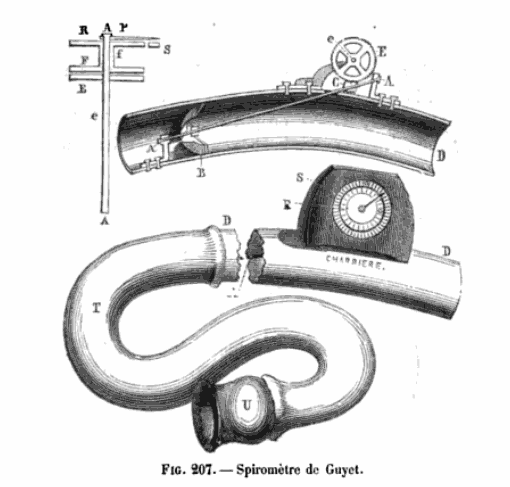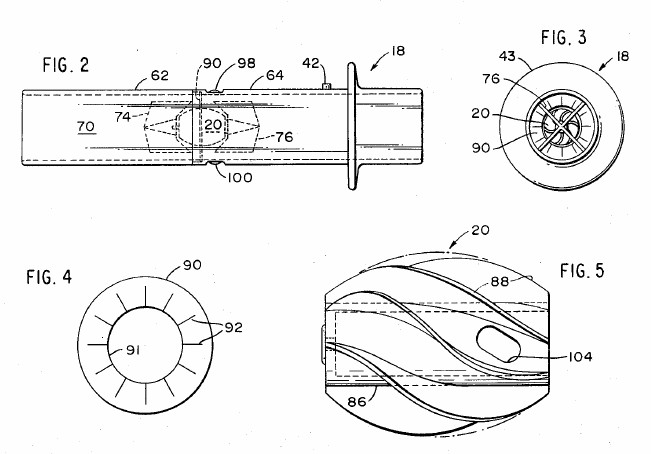Turbine spirometers have been around in one form or another for well over a hundred years. The accuracy of the early versions of this type of spirometer was poor, partly because of the turbine designs weren’t terribly efficient and partly because these devices were mechanical in nature and the gear trains or other mechanical linkages added a lot of friction and resistance.

From: Nouveaux éléments de pathologie générale, de séméiologie et de diagnostic. by Eugène Bouchut, 1875, page 865. ]
The first electronic turbine spirometer was the Marion Labs Spirostat which came to market in the early 1970’s. It used a disposable in-line turbine where the turbine blades were directly in the stream of inspiratory and expiratory flow and rotated accordingly. There was an optical pickup (a light beam passing through a hole in the turbine) and the rotations were converted to inspiratory and expiratory volumes. The passageways through the Spirostat’s turbine sensor were quite narrow and the resistance to flow was high. The turbine also had a fair amount of mass, was perceptibly slow to start moving and slow to stop and would not have met the current ATS/ERS standards.

